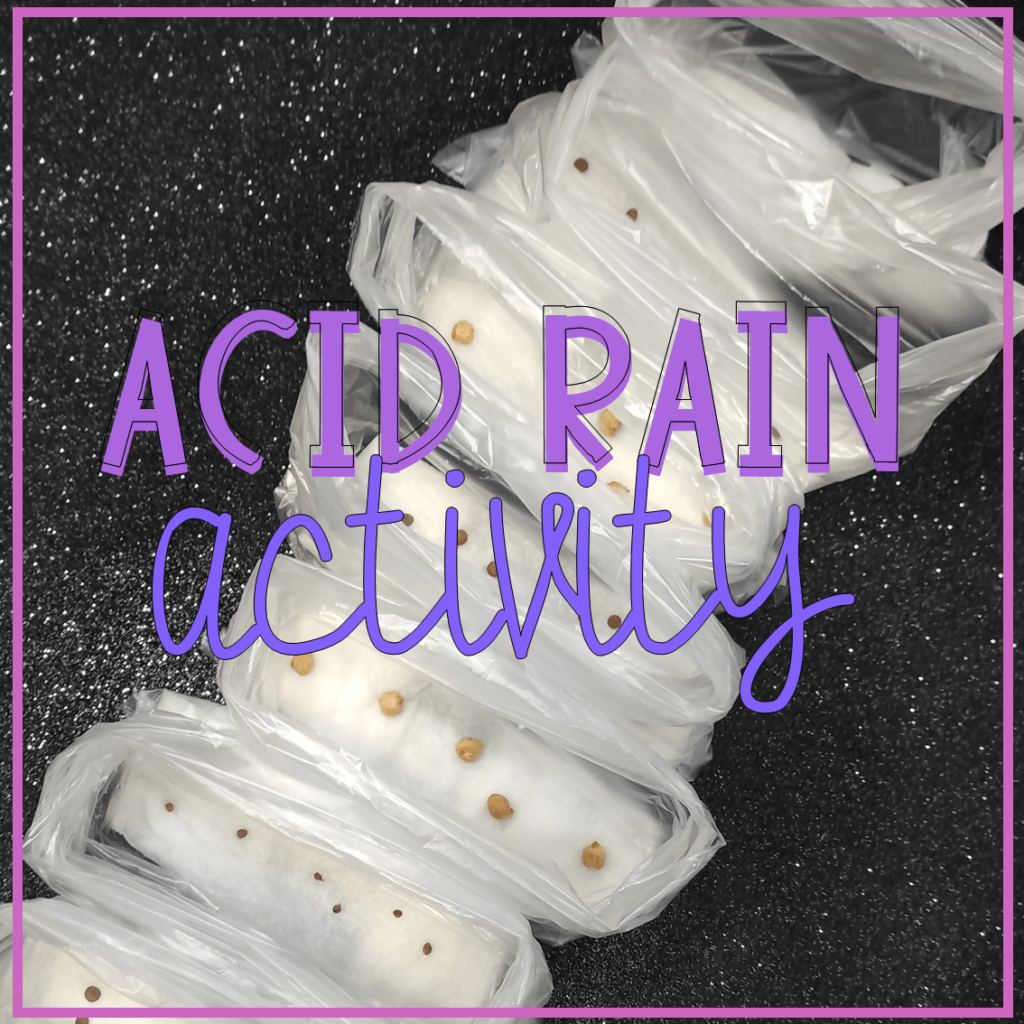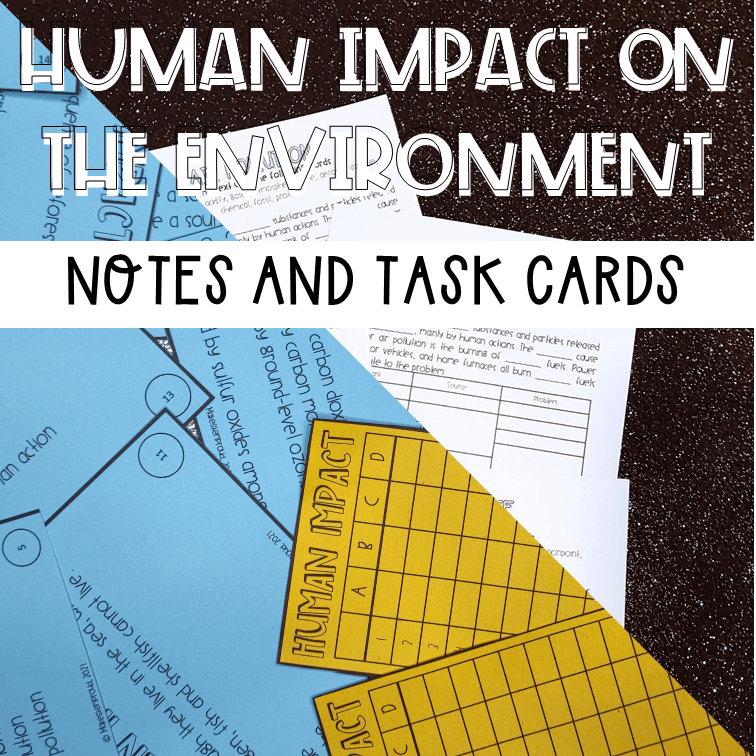I am currently teaching human impact on the environment to my 13 year old students. They are learning all about how humans impact the environment, and specifically about acid rain and what human activities cause it. So… I started researching, and I found an acid rain activity for the lab, but… it was not all perfect.
That’s why I saw an activity similar to this, and thought: this activity would work for everyone, pretty much. I have used this acid rain lesson plan for middle school, but it could work for high school, depending on the amount of background you give your students. It could even work for elementary if you really needed it to.
Contenidos
Before my acid rain activity: the pH scale
The middle school students I taught about acid rain and it’s impact, had no idea about what an acid is, what a base is… nothing, nada. They had some idea that acid rain is formed because of reactions in the atmosphere, with polluting gasses… but that was it. They also had never really seen reactions in their chemistry classes.

So my background before the lesson on acid rain was the human impact on the environment: fill in the gap notes, as well as using my task cards. You can find it here:
As I have said, my students knew nothing about acid-base, so I decided to intriduce it the easiest way possible: by using lithmus paper and showing my students how it changes color.
I also related the concept of acid to both vinegar and lemon juice.
If you were teaching high school students that already knew about chemical reactions, you could give it to them, and have them adjust the reaction.
My experiment: acid rain activity
The acid rain lab activity focuses on planting seeds at different pHs. I used my «whole-group experiment» approach: where all the students focus on a single variable and set different conditions for that variable.
Therefore, the whole group was divided into mini-groups and each group was assigned a different quantity of vinegar, which resulted in different pHs.
Now… I had previously done the experiment, and I had tried 0% vinegar, 25% vinegar and 50% vinegar. There was… nothing in either of the last two, so I thought… we need to decrease the vinegar percentage by a lot.
So this is the experiment I have done with my students. Each big group had a different seed: some had chickpeas, and some had lentils. I then set up my lab for different stations, where each mini-group would have different conditions.
These conditions were: 0%, 2%, 5%, 8% and 10% vinegar.
All of them were put in plastic bags and placed on the windows of the classroom, with the same absorbent paper as «substrate».
If you want to find the full strategy for how I use stations in the lab, in a post in spanish, and whole group and small group experiments…
My results: the big flop
Aaaaaaaaaaaaaaaaaaaaaaand…. nothing grew, nothing, except for the 0% vinegar, which sprouted over a weekend in the case of both seeds, so if you’re wondering how much chickpeas and lentils take to sprout, it’s between 2-4 days.
Which basically proves:
- By changing the pH, even sligthly (2%), kills everything (except apparently fungus…)
- The only way to grow things in the classroom that is free of smells, is by doing it encased in plastic bags.
- I obviously need to change the percentages of vinegar AGAIN.
My plan moving forward: what I will do
Things that will change:
- Percentages of vinegar will be changed to acheive a better result. Doing a range of 5 percentages between 0 and 2% sounds good.
- Add some basic pHs as well, just for fun, to see what happens.
- Not placing the bags directly over the radiators.
Things that will continue:
- The planting in plastic bags with absorbent paper taped to windows.
- Having a paper to take the measurements above the bags.
- Giving the students the responsibility for their experiment.
- Asking for some critical thinking questions for the students to complete after the lab results are in.
So if you want to try it for yourself, those are my top tips on how to complete the simplest acid rain activity for all levels.
